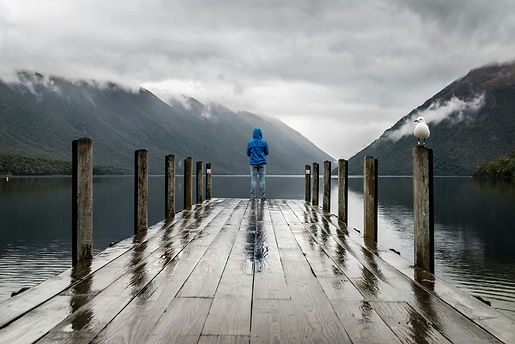
COURAGEOUS ADAPTABILITY
Courageous alternatives to be agile and adaptable in a VUCA world
Exploring Expertise
Landing Place
Virtual Connection

EXPLORING EXPERTISE
An alternative approach to professional Supervision
During the course of 2020 I came to discover, in new ways, how much I love something that I had only ever done, either for students of my courses in their practicum period, or otherwise in a somewhat ad hoc fashion.
Commonly, it is called supervision, but I have never liked that word. I am concerned by the potential insinuation of inequality that word could imply. Despite not having yet distinguished a better way of describing it, nevertheless, I can honestly say that apart from my teaching of Thinking Environment programmes, and being a Thinking Partner, this role – which I am now thinking of as one of being a companion in the exploration of expertise – has turned into something that I derive enormous pleasure and fulfillment from.
So, I set my mind to thinking about what to call this – and came up with exploring expertise. I like the idea that the commitment is one of continuing to learn together, from each other’s experience, and – of course – to co-create a Thinking Environment in the relationship so that we can discover more and more about what it takes to embody being an expert-explorer of this question:
“What does it take to create the conditions under which people can do the best possible job of thinking well, for themselves, being themselves fully?”
One of the challenges we face as Thinking Environment practitioners is that our work is a continual process of swimming upstream. We are committed to replacing the default conditions in which the world primarily operates, with the exact opposite, namely the Ten Components of a Thinking Environment.
In order to keep ourselves resourced and self-expressed in this courageous endeavour, I believe that we owe it to ourselves to regularly create opportunities in which we are not only creating thinking environments for others, but in which we are also having a thinking environment created for us. A place in which we can face what we need to face about what it takes to dance joyfully on the knife edge of expertise and exploration at the same time.
I am, therefore, delighted to invite you to consider the idea that a regular session with me could be a worthwhile investment in your practice of using the Thinking Environment as a coach, a facilitator or a teacher.

THE LANDING PLACE
PERSONAL OR PROFESSIONAL THINKING SESSIONS
The work of the Thinking Environment rests on the premise that the quality of everything that we do depends on the quality of thinking that we do first.
Understanding what we mean by the quality of our thinking is something that we need to think about! In lives that are challenged with having insufficient time to think, we can be forgiven for importing thinking from the past into the present in the belief that it saves time.
The truth is our lives are constructed of moments upon moments inside of which a myriad complexity of events are continuously occurring. How we view those moments, and what we choose to do with them will be driven by the assumptions we are making.
Many years ago, when I studied the Existentialists, I summarised my learning in this way:
We are doomed to be free! The only choice we do not have is to have no choice.
As Mary Oliver asked in The Summer Day:
"Tell me, what is it you plan to do
with your one wild and precious life?"
Now that is a question that warrants some thinking about, doesn’t it?
And no matter whether you are feeling buoyed or despondent, renewed or depleted, refreshed or weary, there is a choice each one of us can choose to access for our one wild and precious life. We can choose to think about the assumptions that are driving our feeling, our doing, our being, and in so doing create, each of us in our own unique way, our response to that question.
But thinking, and creating, is messy. It is risky. It takes courage.
We all need somewhere safe.
Somewhere where we can feel.
Somewhere where we can be ourselves fully, free of the fear of judgement or censure.
I call this The Landing Place.
A time to think, and feel, and be.
A time to generate afresh what you want, and what you need and what you can do to produce that for yourself.
In The Landing Place I promise you that:
-
You will be listened to without interruption
-
You will be given time, free from the inherent rush and urgency that surrounds you.
-
You will be able to explore deeply what you want to think about
-
You will be able to release feelings if you need to
-
You will be able to construct outcomes you want to pursue
-
You will be able to remove untrue limiting assumptions that block your pathway to your outcome
-
You will be able to generate new ideas
-
You will be able to feel liberated and re-energised.
-
You will be able to, if you want to, draw on my 38 years of experience in supporting people to unfold their potential
-
You will come home to yourself, you will come in, to land.
Given the profound gift of all that you give, consider offering yourself the gift of receiving back, by giving yourself time to think, and feel and be, in an environment just for you.

VIRTUAL CONNECTION
Effective online facilitation of meetings using the Thinking Environment
“The ability to create an environment that strengthens and deepens our competence with connecting and engaging will be a distinguishing feature of gatherings that take place in a virtual setting.”
It's an oxymoron or at the very least a paradoxical.
I have spent so many full days online recently, teaching people how to access the profound levels of human connectivity that can be achieved when we co-create thinking environments with each other.
Gallery or speaker view? Gallery means we can see everyone (well, depending on the number of people on the call, and depending on whether everyone’s cameras are on), so we can recreate to some extent the feeling of being part of the group or team. It’s actually only “some” extent, it’s limited, because we still only have two dimensional, heads and shoulders versions of each other, and when we look into each other’s eyes – to indicate our attention – to the person supposedly receiving our attention we look like we staring into the bottom corner of our screens – or somewhere else, other than at them.
Speaker view is better, but then we lose contact with the whole group.
Add to this conundrum the fact that people don’t have the bandwidth or data to keep their cameras on, and – additionally – we are speaking into the void created by muting ourselves because for each of us we have multiple distractions going on in our individual environments, and the challenges to connection and communication increase exponentially.
We’re missing so very many of the things that we need in order to connect properly.
However, in the face of all that we are facing, there is a broad consensus that The Thinking Environment™ makes a significant, palpable difference to the quality of engagement, despite all of these challenges and constraints.
Since the outbreak of Covid-19, and the resulting pandemic, we’ve had so many of our assumptions challenged. People actually can be trusted to stay at home, balance all of the complex demands of their lives – now including home schooling children in the mix – and still get their work done and deliver on their commitments.
We don’t all have to be in the same building to get the job done.
Undoubtedly many innovations around virtual meeting culture and practices will have emerged. But if my experiences since 2020 are anything to go by, we are all putting up with, and working around, many compromises in virtual meetings.
We have learned to tolerate that the images of our colleagues do not remain constant and pronounced, that the sound of our voices do not remain audible and clear, and we have learned to put up with, be patient with and work around the fact that the environments in which we each sit are not free from multiple other distractions.
Some things literally cannot take place on-line, in the way that they do if we walk into the same room as each other. A myriad of signs, manifestations, expressions, indications and evidence that we, relational human beings that we are, are picking up on subconsciously, become tenuous in the virtual space.
And so, as this “new normal” stretches out ahead of us, the ability to be able to create an environment that strengthens and deepens our competence with connecting and engaging virtually will be a distinguishing feature of any gatherings that take place in a virtual setting.
For more than 35 years, the work of the Thinking Environment™ has been exploring the answer to the question: what are the conditions that will enable people to do their finest, independent thinking?


